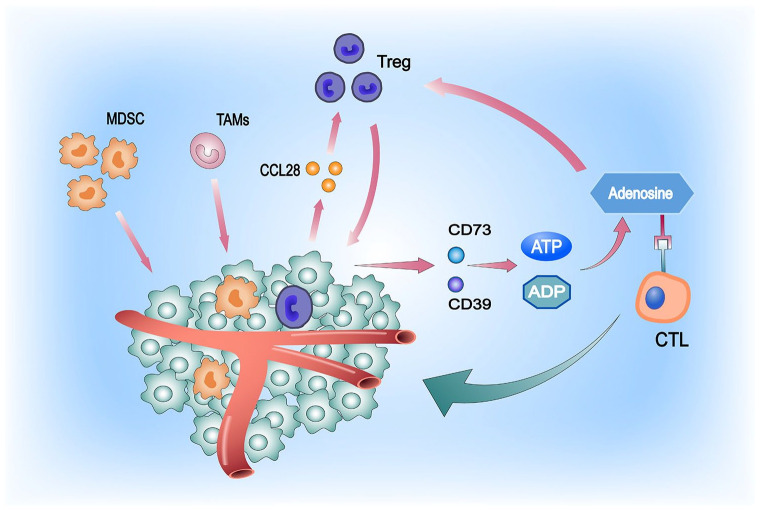Figure 2.
Atypical tumor vascular growth leads to hypoxic TME formation, which is an important mechanism underlying tumor immune evasion. This attracts large numbers of MDSCs and TAMs, and tumor cells can secrete high levels of the cytokine CCL28 under hypoxic conditions, thereby recruiting large numbers of Tregs (immunosuppressive cells) into the TME. Tregs can survive hypoxic conditions and, in response, regulate CD73 and CD39, both of which convert ADP and ATP into adenosine. Adenosine inhibits the proliferation and expansion of T cells and the secretion of effector cytokines by binding to the adenosine A2A receptor on T cells, depriving them of their aggressiveness against tumor cells 34 . Meanwhile, the presence of adenosine contributes to the increase in the number of Tregs. In addition, it promotes their immunosuppressive effects, with positive feedback between the two continuously driving the immunosuppressive environment of cold tumors. The presence of high adenosine levels in the TME significantly advances the progression of tumor immune escape. 35
MDSC indicates myeloid-derived suppressor cell; TAM, tumor-associated macrophage; TME, tumor microenvironment.

